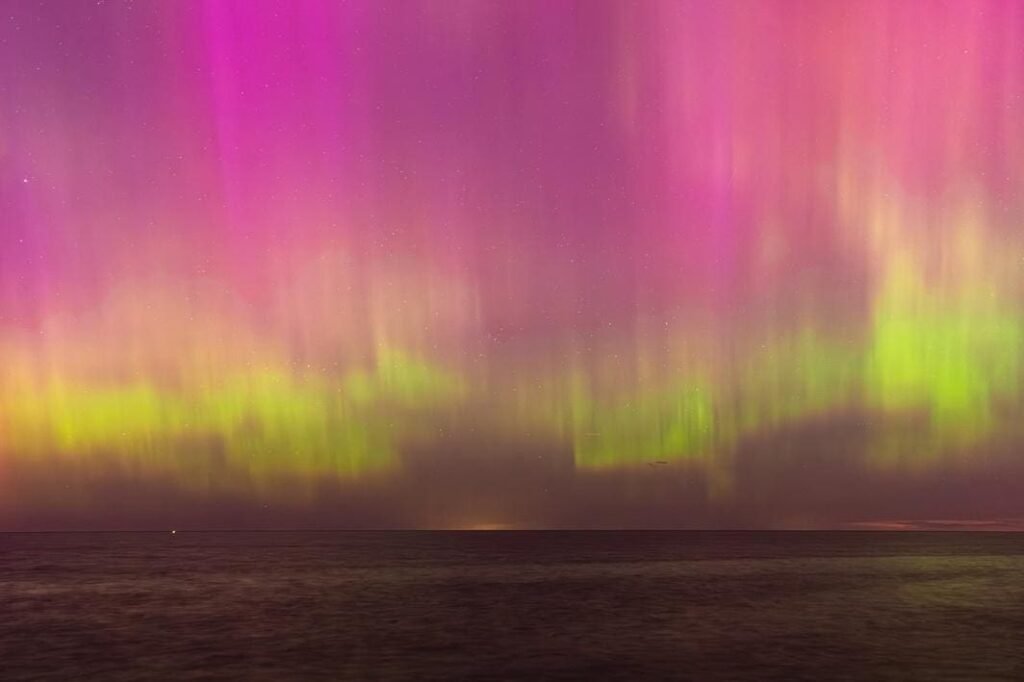Scientists have revealed that there were more sunspots on the sun during July 2024 than at any time since December 2001, indicating increased magnetic activity. Sunspots are magnetic disturbances on the sun’s surface, counted every day since 1611, that can lead to solar flares and coronal mass ejections which can cause geomagnetic storms and the Northern Lights. The monthly average sunspot number for July 2024 reached 196.5, as reported by the Royal Observatory of Belgium’s Solar Influences Data Analysis Center.
After a week of “photographic displays” of the Northern Lights in North America, more displays are likely in the coming weeks, including this weekend. A recent M8-class solar flare is expected to trigger a G2-class geomagnetic storm, allowing the Northern Lights to be visible as far south as New York and Idaho this weekend. The solar wind, a stream of charged particles from the sun, causes the Northern Lights when it interacts with Earth’s magnetic field, creating ovals of green and red light near the poles.
The sun has an approximately 11-year solar cycle during which its magnetic activity waxes and wanes, with the current cycle, Solar Cycle 2025, at the cusp of its peak period of activity known as “solar maximum.” While May 2024 saw the most sunspots since December 2001, Solar Cycle 2024 actually peaked in July 2000 with 244.3 sunspots counted. This suggests that Solar Cycle 2024 could become more intense, with a forecast for maximum activity between August 2024 and January 2025.
The Northern Lights are typically visible to those near the Arctic Circle, such as Alaska, northern Canada, and northern Scandinavia. However, when there are many solar flares and coronal mass ejections, the solar wind can become more intense, allowing the Northern Lights to be visible further south. Those in North America may be able to see the Northern Lights as a faint glow on the northern horizon when this occurs.
For the latest updates on potential Northern Lights displays, individuals can check the Space Weather Prediction Center’s “aurora view line,” which shows the southernmost locations from which the lights may be visible. The recent extreme G5 geomagnetic storm in May 2024, which caused aurora displays worldwide, was the highest possible rating. While this weekend’s storm is expected to be a G2, allowing viewing as far south as New York and Idaho.
With increased solar activity and a potential peak in Solar Cycle 2024, more displays of the Northern Lights are expected in the coming months. The solar wind, sunspots, and geomagnetic storms all play a role in the visibility of the Northern Lights to observers on Earth. Those interested in witnessing this natural phenomenon can stay informed about potential viewing opportunities and take advantage of clear skies to catch a glimpse of the mesmerizing beauty of the Aurora Borealis.












